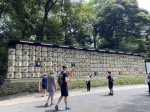
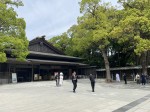

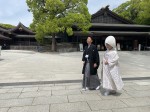
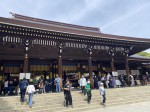
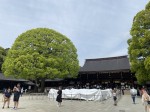
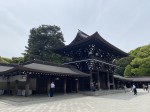
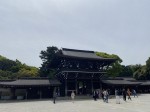
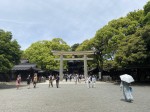
Shinto in Japanese tradition and culture
Meiji Jingu is a Shinto shrine. Shinto is called Japan’s ancient and original religion and is deeply rooted in the way of Japanese life. Shinto has no founder, no holy book, and not even the concept of religious conversion, but Shinto values are for example harmony with nature and virtues as “Magokoro (sincere heart)”. In Shinto, some divinity is found to be Kami (divine spirit), or it may be said that there is an unlimited number of Kami. You can see Kami in mythology, in nature and in human beings. From ancient times, Japanese people have felt awe and gratitude towards such Kami and dedicated shrines to many of them.
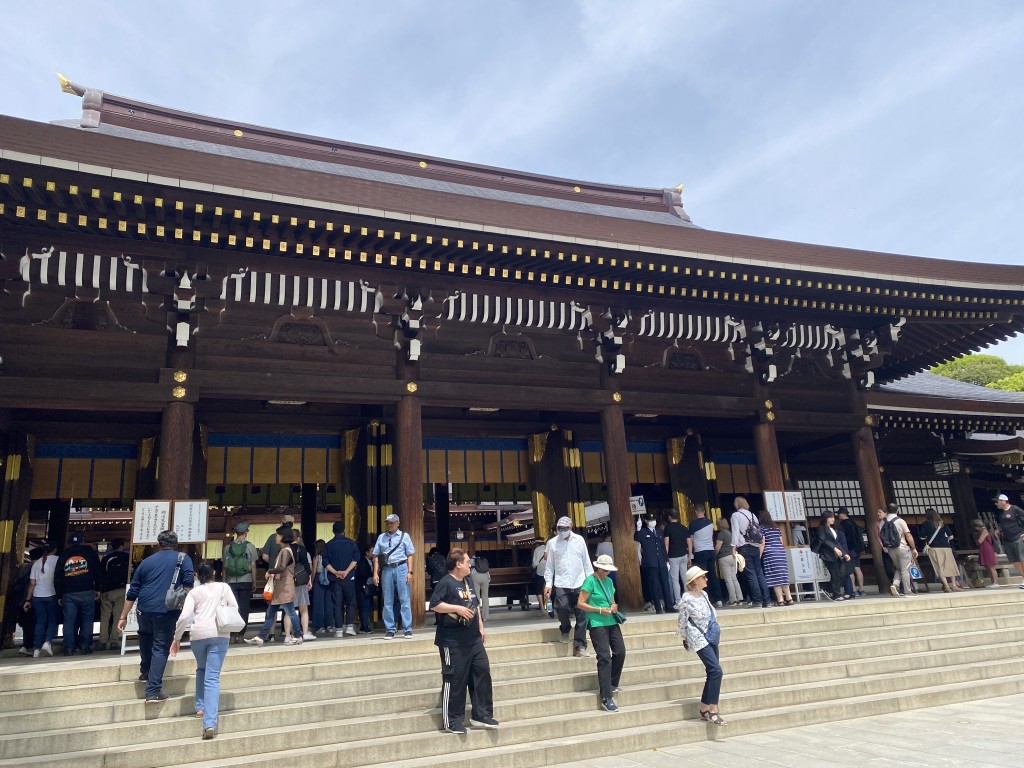
Meiji Jingu Shrine and Emperor Meiji
Meiji Jingu is dedicated to the divine soul of Emperor Meiji and his consort Empress Shoken (their tombs are in Kyoto).
Emperor Meiji passed away in 1912 and Empress Shoken in 1914. After their demise, people wished to commemorate their virtues and to venerate them forever. Thanks to the sincere heart of the people, this shrine with the forest was established on November 1, 1920.
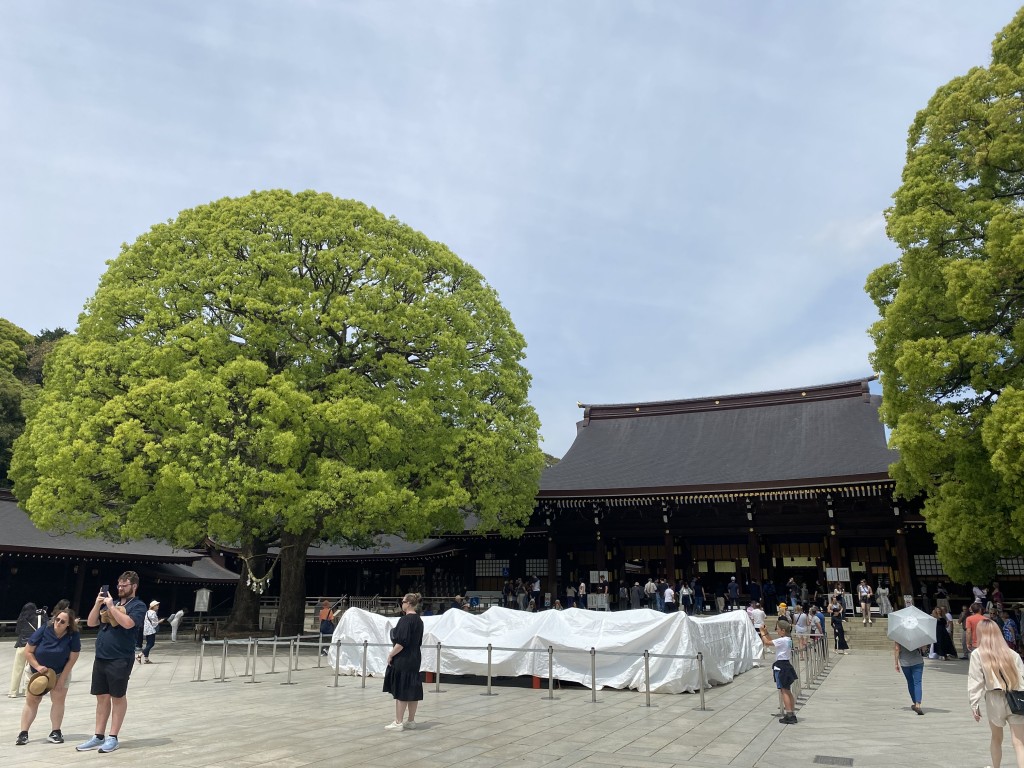
Emperor Meiji (1852-1912) is the 122nd emperor of Japan, enthroned in 1867. (The current Emperor is the 126th.)
When Japan was facing unprecedented conditions such as the opening of the country to the world after its long isolation and the end of the Tokugawa Shogunate, Emperor Meiji took the initiative to promote friendship with other countries and adopt Western culture and technology while preserving Japanese identity and thus laid the foundations of modern Japan.
Role of Empress Shoken in the Japanese history
Empress Shoken (1850-1914) not only supported behind the scenes but also devoted herself to promoting national welfare and women’s education. She was also concerned about world affairs, and she donated fund, named after her “Empress Shoken Fund”, to the International Red Cross, which is being used for international welfare activities until today.
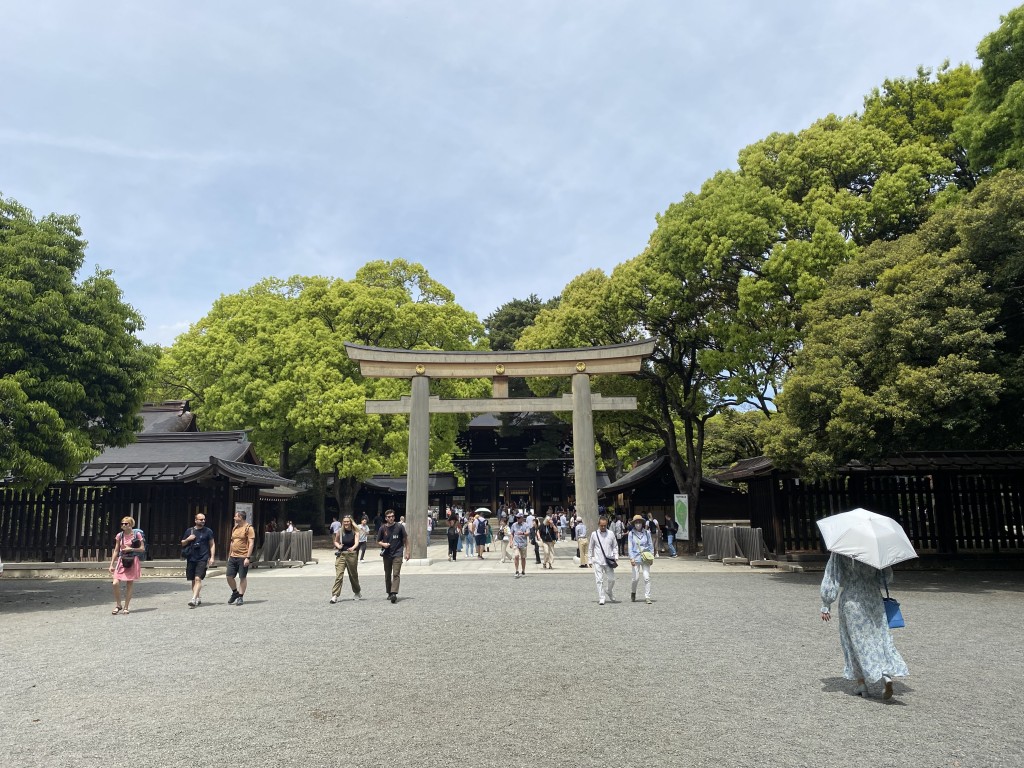
The forest around Meiji Jingu Shrine
To create this forest, about 100 000 trees were donated from all over Japan, and planted by young volunteers. This forest was carefully planned to make an eternal forest that recreates itself. Now after about 100 years it cannot be distinguished from a natural forest, inhabited by many endangered plants and animals.
Emperor Meiji and Empress Shoken input into the Japanese poetry
They excelled in writing waka (traditional Japanese poems of 31 syllables). Their feelings towards the world, the country and the people, as well as ethical thoughts were expressed in their poems. Visitors can draw a poem from 30 selected poems (English translation) from the “Omikuji” box near the main shrine building.
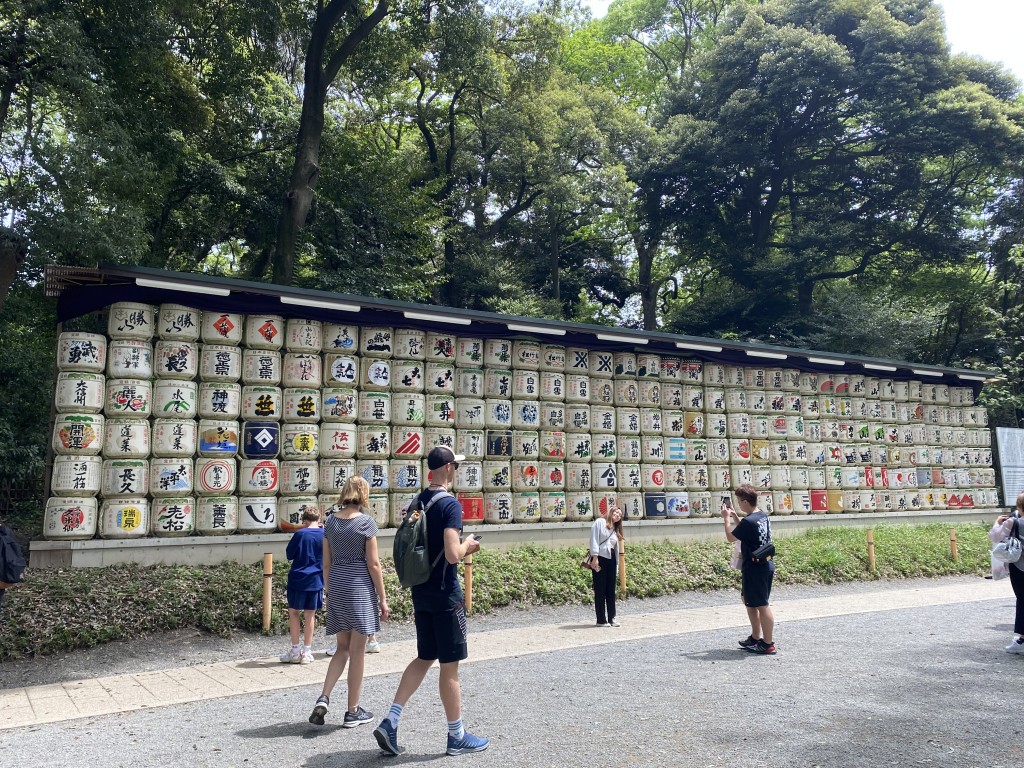
Waka Poetry – composed by Emperor Meiji and Empress Shoken
In the palace tower
Each and every window
Was opened widely,
And then in four directions
We viewed cherry in full bloom!
-- Emperor Meiji
When a person keeps
Friends who are considered good,
It is most natural
That he, too, in his conduct
Is honest and trustworthy
-- Empress Shoken
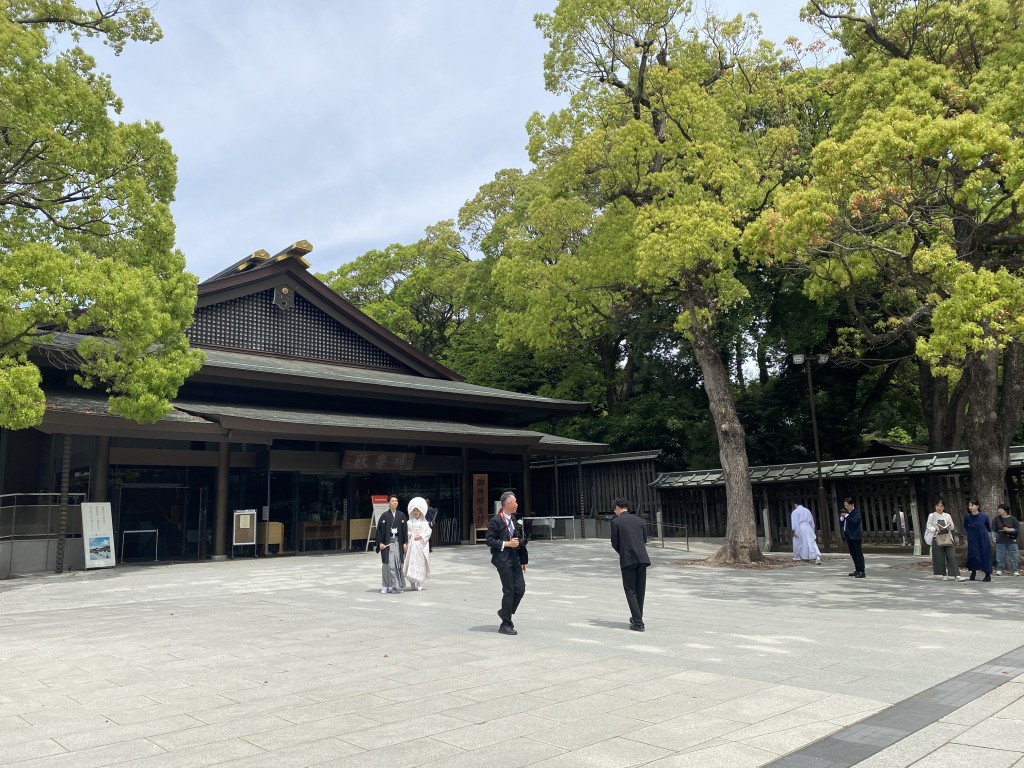
Nature at Meiji Jiingu
The Inner Garden (Gyoen) is the only part that existed before the establishment of Meiji Jingu. In fact, Emperor Meiji designed the iris garden, small path, and fishing spot specifically for Empress Shoken in order to give her fresh energy. Verdure in spring, various kinds of flowers in summer, autumn leaves, and snow in winter give inexhaustible charms to the garden all the year round.
Opening Hours: 9 AM to 4:30 PM (last admission 30 minutes prior to closing)
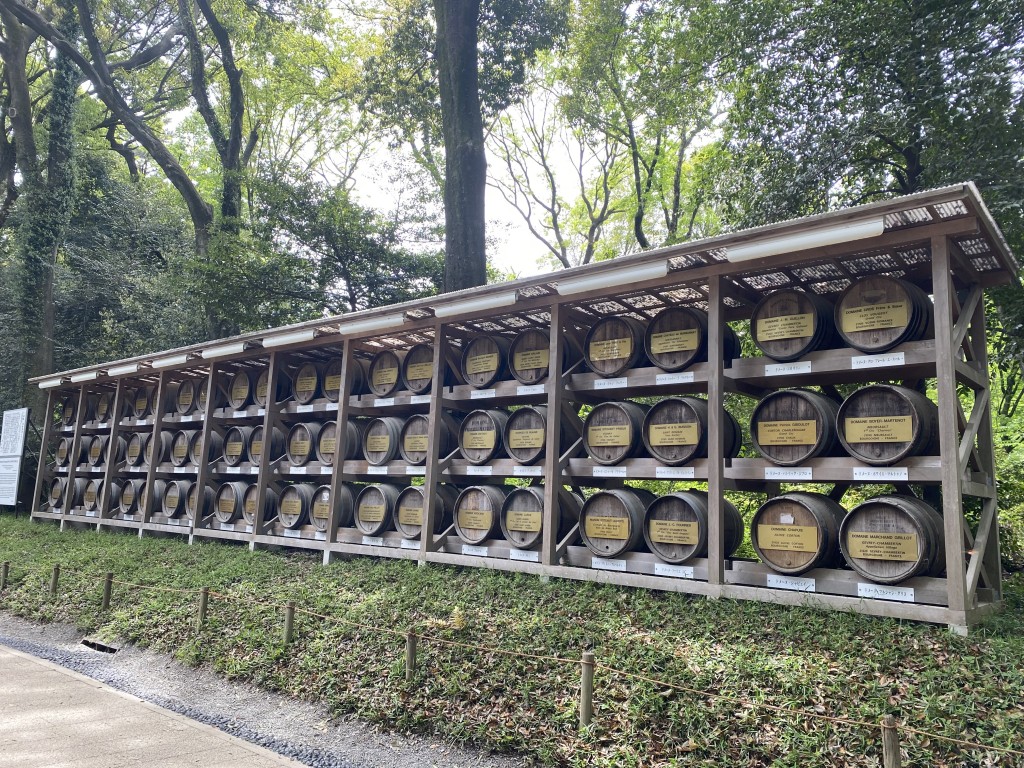
Meiji Jingu Museum
The Meiji Jingu Museum was opened to mark the 100th anniversary of the founding of Meiji Jingu in 2020. It was designed by architect Kuma Kengo, who also designed Tokyo’s New National Stadium. Wood is an important feature of Kuma’s design, and this museum is no exception. The museum displays articles used by or associated with Emperor Meiji and Empress Shoken in 3200 square meters of display space spread over two floors. The museum holds exhibitions that aim to deepen understanding of Meiji Jingu and Japanese culture.
Opening Hours: 10 AM to 4:30 (last admission 4 PM)
Closed: Thursdays (open on Thursdays that fall on national holidays) and during exhibition installations.
Location
Address: 1-1 Yoyogi-Kamizono-cho, Shibuya-ku, Tokyo 151-8557, Japan
Finally, why not explore more Tokyo? Check our ideas in posts on Tokyo and its suburbs, Shinjuku Must-see Spots Route, 1-Day, everything-in-1 tour of Tokyo’s top spots or just relax and Enjoy a Starbucks Coffee on the Rooftop Garden of the Former Site of Matsuzakaya Ginza Store – GINZA SIX.
Date: 2025-05-07
Author: Beti – A passionate traveler and lover of Asian cuisine, especially Thai and Japanese dishes, Bernadeta brings her culinary and cultural experiences to life in her writing. Beyond her travels, she’s an avid technology enthusiast with a deep interest in data processing, merging her love for exploration with analytical insights.
Photographer: Adalbert – An aficionado of computers and photography, Adalbert captures the essence of diverse cuisines with a discerning eye. A connoisseur of rich flavors and particularly fond of meat-based dishes, he combines his technical skills with his passion for the culinary arts in every shot.









